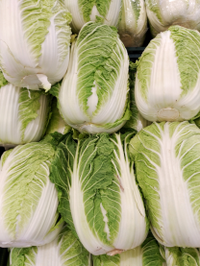
Photo from wikipedia
The vegetation pot experiment with kohlrabi (Moravia variety) was established in 2014 and 2015. The experiment included four treatments of fertilization: (1) untreated control, (2) digestate, (3) digestate + Mg… Click to show full abstract
The vegetation pot experiment with kohlrabi (Moravia variety) was established in 2014 and 2015. The experiment included four treatments of fertilization: (1) untreated control, (2) digestate, (3) digestate + Mg + S, and (4) digestate + S. Treatments 2–4 were fertilized with the same N dose. Differences between the years were recorded in all parameters. Compared with the variant with digestate (100%), the kohlrabi yield of the unfertilized variant was demonstrably lower in both years (33.1% and 46.9%). Digestate enriched with the fertilizer containing Mg + S (treatment 3) demonstrably increased the yield of kohlrabi by 10.2% and 15.7% compared with pure digestate (treatment 2). Digestate enriched with the fertilizer containing elementary S (treatment 4) demonstrably increased the yield of kohlrabi (by 7.4%) only in 2015 compared with pure digestate (treatment 2). Except for the year 2015, there were no yield differences between variants 3 and 4. In both years, the lowest content of nitrates in kohlrabi was observed in the unfertilized control (135 and 163 mg NO 3 − /kg FM , respectively). Following the application of digestate (treatment 2), the content of nitrates (mg NO 3 − /kg FM ) increased to 327 in 2014 and to 509 in 2015. The addition of fertilizers with Mg + S as well as fertilizer with elementary S to the digestate (treatment 3 and 4) significantly reduced the content of nitrates to 295–301 mg NO 3 − /kg FM (2014) and to 449–468 mg NO 3 − /kg FM (2015). The content of ascorbic acid did not statistically differ among the four treatments in the two years (268–281 and 311–329 mg/kg FM in 2014 and 2015, respectively). Digestate supplemented with Mg + S (magnesium sulfate) or only with elementary S can be recommended for kohlrabi fertilization prior to the planting in order to reduce dangerous accumulations of nitrates in kohlrabi.
Journal Title: Sustainability
Year Published: 2020
Link to full text (if available)
Share on Social Media: Sign Up to like & get
recommendations!